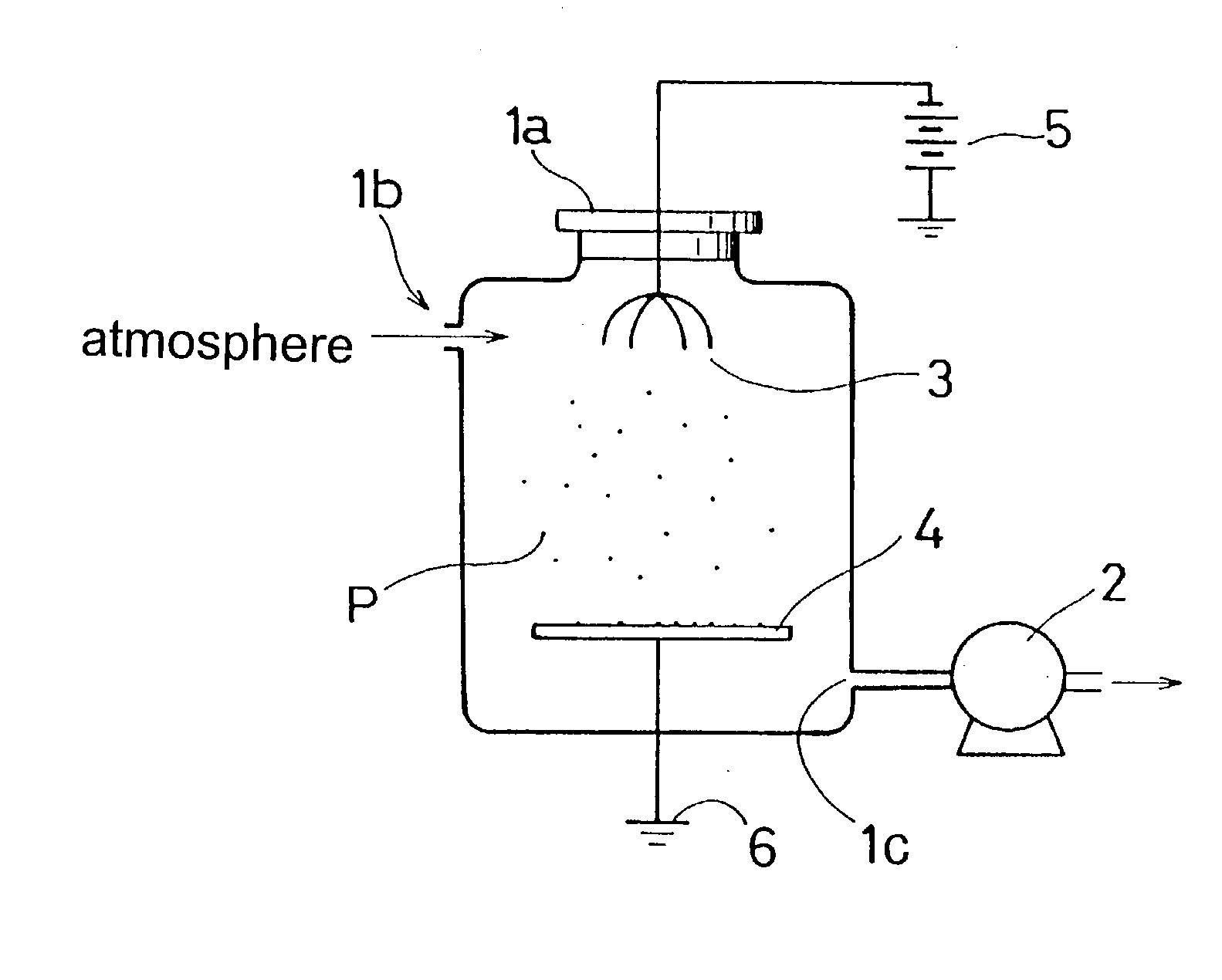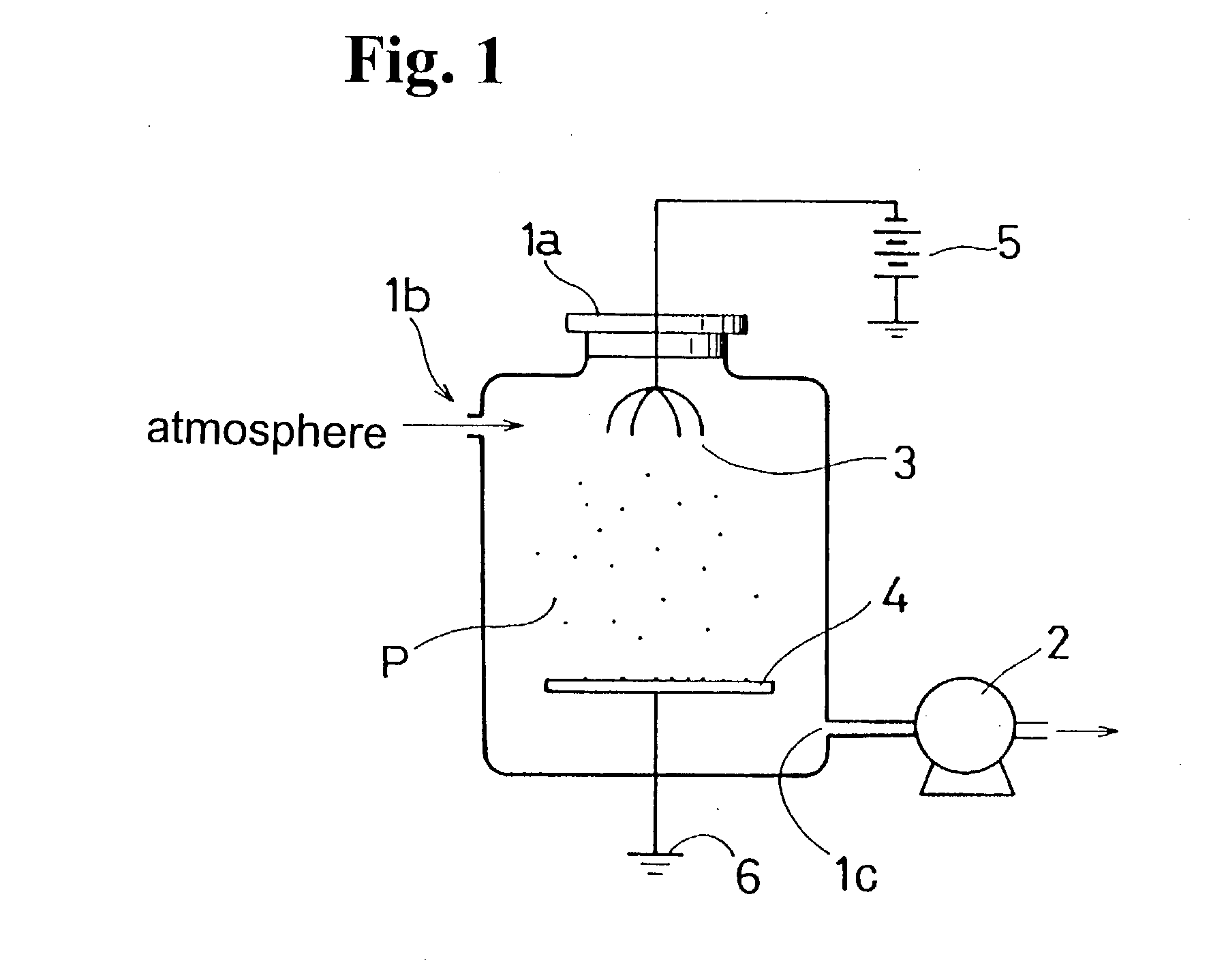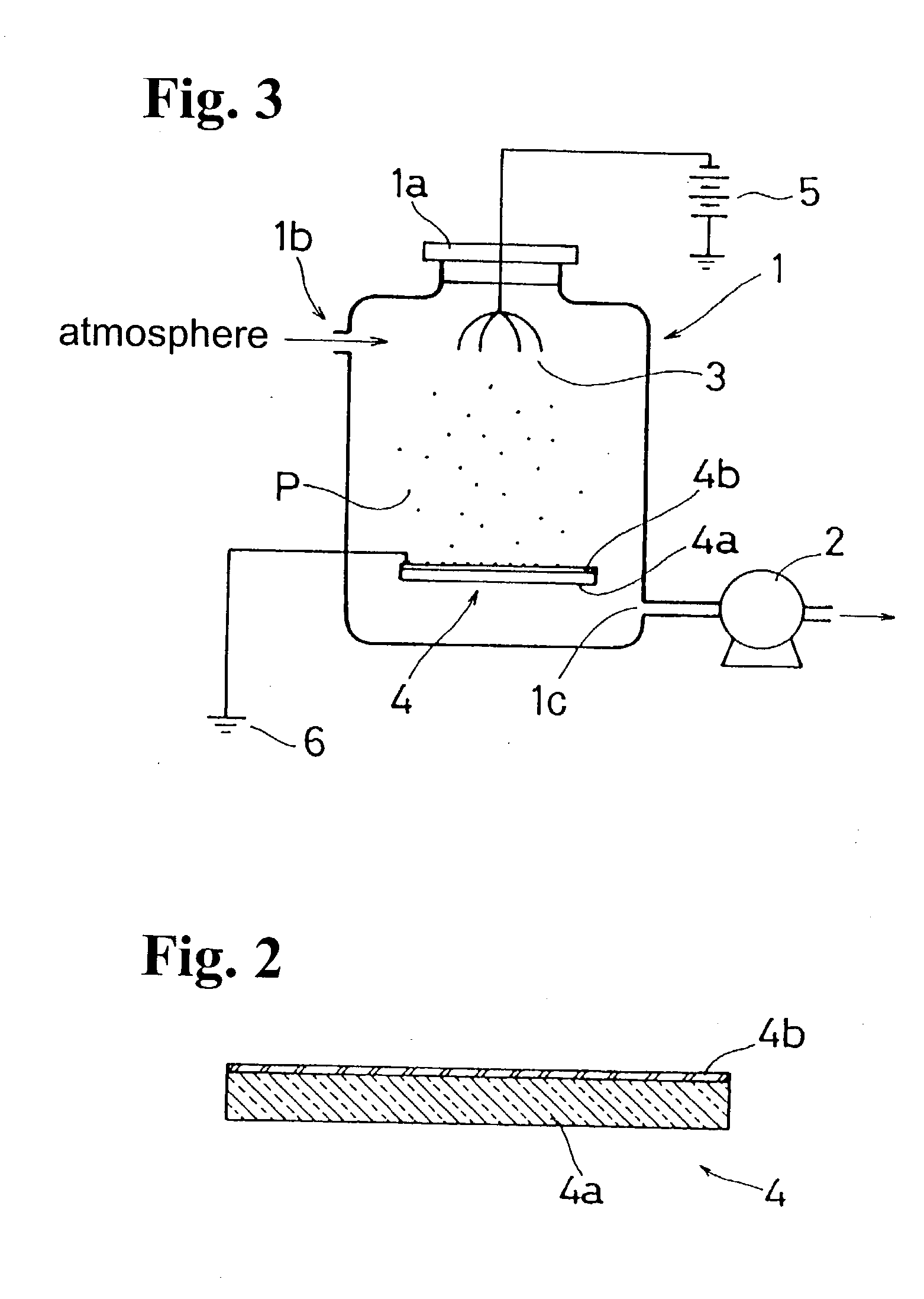Collecting apparatus of floating dusts in atmosphere and method for measuring floating dusts
a technology of atmospheric collecting apparatus and floating dust, which is applied in the field of collecting, can solve the problems of difficult to extract floating dust individually, high toxicity, and difficult to do analyses
- Summary
- Abstract
- Description
- Claims
- Application Information
AI Technical Summary
Problems solved by technology
Method used
Image
Examples
Embodiment Construction
[0093] Hereunder, embodiments according to the present invention will be explained with reference to the accompanying drawings.
[0094] FIG. 1 is a schematic view for showing a structure of an embodiment of a collect device according to the present invention. A collecting container 1 has a lid 1a that opens and closes a top of the container. The collecting container also includes an inlet port 1b and a communicating port 1c. The communication port is connected to an inlet of a pump (compressor) 2, so that the pump 2 sucks the atmosphere into the collecting container 1 through the inlet port 1b in a state where the lid 1a is closed.
[0095] In the collecting container 1, a discharge electrode 3 is disposed at an upper portion thereof and a dust-collecting electrode 4 facing the discharge electrode 3 is positioned at a lower portion thereof. A high voltage is applied to the discharge electrode 3 from a high voltage source 5, so that the air near the discharge electrode 3 is ionized to pro...
PUM
| Property | Measurement | Unit |
|---|---|---|
| diameter | aaaaa | aaaaa |
| diameters | aaaaa | aaaaa |
| particle diameters | aaaaa | aaaaa |
Abstract
Description
Claims
Application Information
 Login to View More
Login to View More - R&D
- Intellectual Property
- Life Sciences
- Materials
- Tech Scout
- Unparalleled Data Quality
- Higher Quality Content
- 60% Fewer Hallucinations
Browse by: Latest US Patents, China's latest patents, Technical Efficacy Thesaurus, Application Domain, Technology Topic, Popular Technical Reports.
© 2025 PatSnap. All rights reserved.Legal|Privacy policy|Modern Slavery Act Transparency Statement|Sitemap|About US| Contact US: help@patsnap.com



